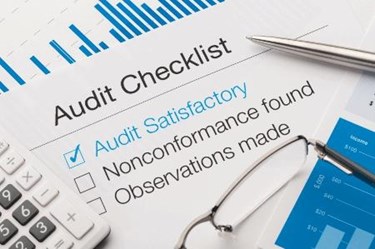How To Build An FDA Audit-Ready QMS — A Primer
By Joy McElroy

The definition of quality of a pharmaceutical product means the product is fit for its intended use, is free from defects, and meets or exceeds customer expectations. The general public assumes manufactured pharmaceutical products are safe, efficacious, and have the correct identity. Within manufacturing facilities, the quality control and quality assurance units are responsible for ensuring that quality pharmaceutical products are produced. This article will address the expected roles of QC and QA, how these roles are related and how they are different, and how to create a sound quality management system (QMS).
FDA Expectations Of Quality Control And Quality Assurance
FDA regulations provide a framework for basic quality requirements that manufacturers must follow. Expected roles of the quality control function include:
- To assess the appropriateness of excipients, raw materials, containers, closures, labels, in-process materials, and finished products.
- To monitor and assess the environment in which the product is manufactured and to assess the manufacturing process itself.
- To determine the suitability of the manufactured product for release to the public.
The expected roles of quality assurance are:
- To review and approve operating procedures, maintenance and calibration procedures, cleaning procedures, manufacturing process procedures, and testing procedures related to the manufactured product.
- To review manufacturing batch records, validation protocols, and testing records.
- To audit the manufacturing and testing laboratories for regulatory compliance.
Many regulations refer to QC and QA as the quality unit, in which they function together as the governing body for the manufacturing facility, ensuring compliance with good manufacturing practices, or GMPs. This means the quality unit ensures development and implementation of proper SOPs and processes from receipt of raw materials and components to the release of the final manufactured product.
FDA regulations assign the quality unit the responsibility of approving or rejecting all manufactured products. However, the regulations do not assign responsibilities to manufacturing personnel to assure quality is built into the product. Therefore, manufacturing personnel must assume responsibility for product quality through proper training and documentation of events and processes. The FDA considers that testing alone does not ensure a quality product, and that quality has to be built in from development through production of the final product, in all areas of the facility.
Common FDA Findings With Quality Control And Quality Assurance Departments
Since 2015, the FDA has issued thousands of warning letters to drug companies. The issues have been:
- Failing to thoroughly investigate any unexplained discrepancies or the failure of a batch or any of its components to meet any of its specifications (21 CFR211.192).
- Failing to prepare batch production and control records for each batch of drug product that include documentation of the accomplishment of each significant step in the manufacture, processing, packing, or holding of the batch (21 CFR 211.188).
- Failing to ensure that each person engaged in the manufacture, processing, packing, or holding of a drug product has the education, training, and experience, or any combination thereof, to enable that person to perform his or her assigned functions, and that training in current good manufacturing practice is conducted by qualified individuals (21 CFR 211.25).
- Failing to establish and follow appropriate written procedures that are designed to prevent microbiological contamination of drug products purporting to be sterile, and that include validation of all aseptic and sterilization processes (21 CFR 211.113).
- Failing to establish written procedures for production and process control designed to assure that the drug products you manufacture have the identity, strength, quality, and purity they purport or are represented to possess (21 CFR 211.100).
- Failing to conduct at least one test to verify the identity of each component of a drug product (21 CFR 211.84).
- Failing to conduct adequate investigations and to address consumer complaints on multiple occasions.
Compliance is mandatory in the pharmaceutical industry. cGMP regulations are set forth to ensure the safety of patients, the quality of manufactured products, and illustrate control over operations. Maintaining quality standards is good business. It prevents adulterated drugs from being sold and it saves manufacturers millions of dollars in injury or wrongful death lawsuits. Without compliance to cGMPs, manufactured drug products cannot be successfully sold.
Requirements For A Sound Quality Management System
The GMPs require each person involved in the manufacturing, processing, packing, or holding of a drug product to have the proper education, training, and experience or combination thereof to successfully perform their assigned job duties. Manufacturing facilities must keep accurate, up-to-date training records that contain full job descriptions and current resumes, including the education and experience of each employee. Facilities must provide and document ongoing training in cGMPs and SOPs. This information must be accurate, up to date, complete, and on file for each person.
Manufacturers must maintain control over their manufacturing processes and testing procedures. The GMPs clearly state that standard operating procedures must be established and followed for all processes related to the manufacturing, testing, and holding of a drug product. Manufacturers must conduct testing to prove the identity, strength, quality, and purity of manufactured drugs. Records have to be generated showing manufactured products meet specifications.
Finally, manufacturers must document all activities conducted before, during, and after the manufacturing process. Documentation must be clear, concise, and to the point. Audit trails should allow anyone investigating the product life cycle to understand the process from the beginning to the end. If there are discrepancies or test failures, these have to be documented, and investigations must be carried out and documented to justify the discrepancies. The FDA’s point of view is if it is not documented, it did not happen. Proper documentation is imperative.
Applying GMP Concepts To Quality Control And Quality Assurance
A facility can ensure an audit-ready QMS by implementing proper quality control procedures, including clearly written SOPs for assessing the appropriateness of components and closures, monitoring the suitability of the manufacturing environment, and assessing the fitness of manufactured products for release. SOPs must be followed, and QC must provide accurate documentation of their assessments. The manufacturing facility must archive all testing records and batch production records for a period of five to seven years.
The quality assurance unit must have the authority to police all operations within the facility pertaining to the manufactured product. There must be stringent SOPs in place to enable QA to review and approve all practices related to manufacturing. QA must have the power to access product quality by reviewing SOPs, maintenance and calibration records, batch production records, and testing records. QA must approve or reject all manufactured products for release and must also play a role in auditing all areas of the facility for compliance.
Implementing The QMS
A QMS supports a facility in several ways:
- Assures all regulatory compliance standards are met
- Ensures accurate record-keeping of audit reports, deviations, data collection, and CAPAs
- Enforces required approval of all documentation, such as SOPs, protocols, test records, nonconformances, and batch production records
- Enforces required disposition of test results and manufactured product
- Requires a summary of document history showing changes and revision dates
A sound QMS will enable a facility to maintain a controlled environment. A facility’s QMS must include a stringent quality policy with sound quality objectives. Employees must be required to read and train on the quality policy and quality objectives, all of which must be documented. The facility must develop a quality manual that includes a scope, documented SOPs, a description of how process interactions will occur, and a justification for any exclusions. The quality manual will require documentation assuring the effective management of operations and the control of company policies and procedures. All documents must conform to the QMS policy, allowing for uniform data collection and documentation methods, as well as ensuring consistency in staff training.
Because all records must be traceable and easily retrievable, they must be managed and controlled. The QMS will enable a facility to assign all documents unique identifiers for quick access and proper control.
To be effective, a quality management system must be robust, in-built, and enforceable. Quality control and quality assurance must work together as a unit to police and impose the implementation of policies and SOPs. The QMS will stand as the quality unit’s principal document. It will enable the quality unit to maintain control and to assess the appropriateness of the manufactured product’s identity, strength, purity, and quality through proper documentation. A vigorous QMS sends the message that a facility is quality conscious and is operating in a state of control, therefore producing a high-quality product.
About The Author:
 Joy McElroy is the founder and principal consultant at Maynard Consulting Company, which provides services in validation engineering, process engineering, quality control, and quality assurance. McElroy began her career in the pharmaceutical industry performing environmental monitoring and sterility testing, and then moved into a supervisory role overseeing quality control. From there, she moved into quality assurance, and then into equipment qualification and process validation. In addition to consulting, she also develops and delivers webinars, on-site training, and seminars in areas such as technical writing, equipment qualification, cleaning validation, FDA audit preparation, and more.
Joy McElroy is the founder and principal consultant at Maynard Consulting Company, which provides services in validation engineering, process engineering, quality control, and quality assurance. McElroy began her career in the pharmaceutical industry performing environmental monitoring and sterility testing, and then moved into a supervisory role overseeing quality control. From there, she moved into quality assurance, and then into equipment qualification and process validation. In addition to consulting, she also develops and delivers webinars, on-site training, and seminars in areas such as technical writing, equipment qualification, cleaning validation, FDA audit preparation, and more.
McElroy earned her B.S. in zoology from North Carolina State University. You can reach her at joy@maynardconsultingcompany.com or connect with her on LinkedIn.
